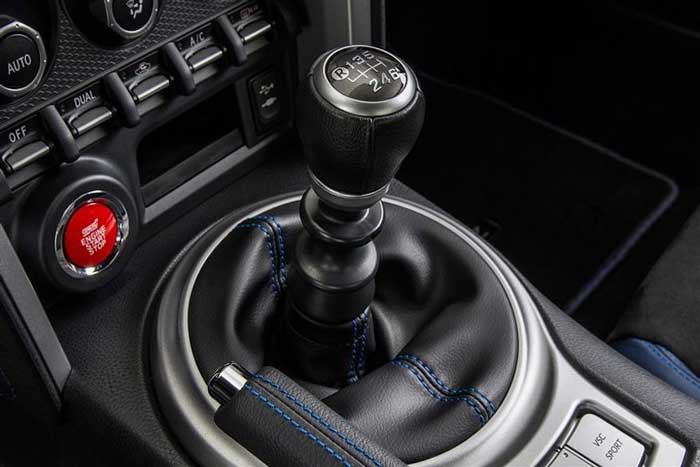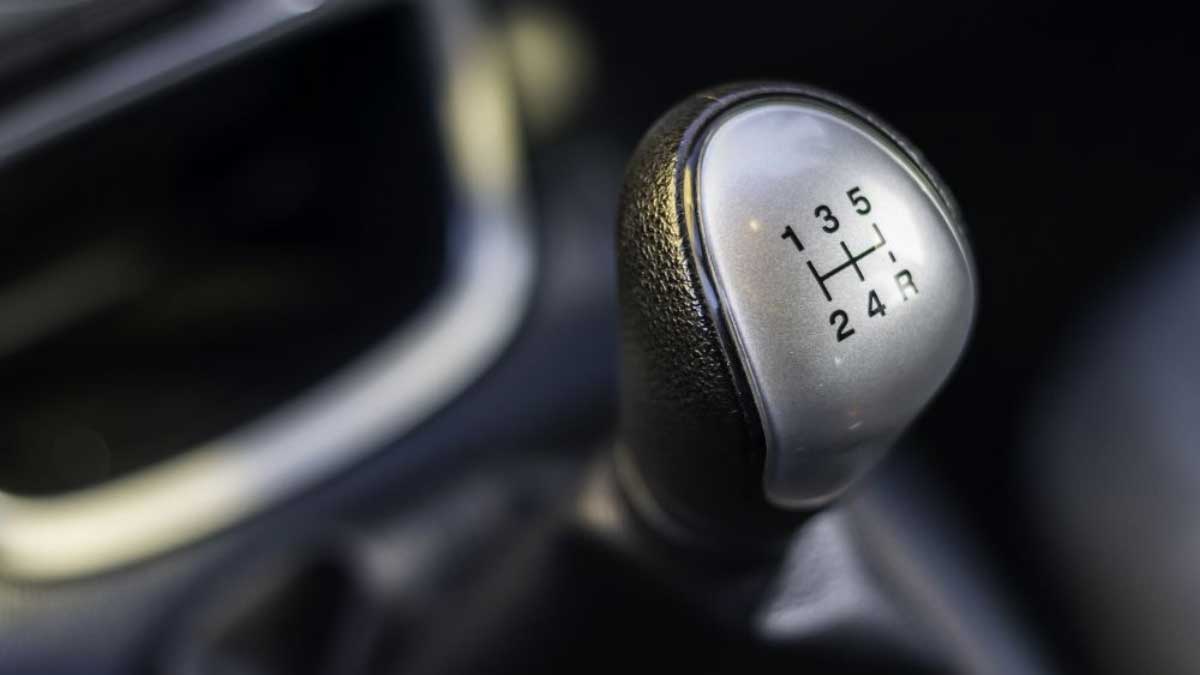Ever wondered what sorcery makes your car go vroom-vroom with a manual transmission? Well, buckle up, folks, because I’m about to demystify the secret dance happening between your clutch, gears, and engine. Picture this: you’re the maestro, orchestrating a symphony of revs and shifts like a pro.
Imagine cruising down the road, smoothly gliding through gears like a ninja slicing through butter. It’s all about that perfect harmony between your right foot, left foot, and hand on the stick. Forget about those automatics doing all the work for you; with a manual, you’re the boss, the commander of gear changes, the master of your driving destiny.
Understanding Manual Transmissions
Well, let’s jump into the delightful world of manual transmissions, where gear changes are not just shifts but a dance between you and your car!

Key Components and Their Functions
- Gear Stick: It’s like the conductor’s baton, helping you choose the tempo (gear) for your symphony (drive).
- Clutch Pedal: This is your harmony pedal; it disconnects and connects the engine from the wheels, allowing smooth gear changes.
- Gears: These are your musical notes, providing different speeds for various driving conditions.
- Flywheel: Think of it as the bass player, storing rotational energy for smoother gear changes.
The Role of the Clutch
When you press the clutch pedal, you momentarily disconnect the engine from the wheels, enabling you to change gears without grinding them. It’s like hitting the pause button in the middle of a song — a quick break for a flawless transition.
How Manual Transmissions Operate
Let’s jump into the inner workings of manual transmissions, those magical boxes that make driving a stick shift like conducting an orchestra of gears. Trust me; it’s more fun than it sounds!
Engaging the Clutch Pedal
When I step on the clutch pedal, I’m basically telling the engine and wheels, “Hang on, folks, I need a moment.” It’s like hitting the pause button in the middle of a chaotic song to line up the next track smoothly. The clutch pedal briefly disconnects the engine from the wheels, making gear changes as seamless as a well-timed punchline.
Shifting Gears Explained
So, shifting gears is where the real dance begins. Picture this: I’m cruising in first gear, feeling the engine’s power at my fingertips. When it’s time to shift to second, I pull the gear stick back like I’m unleashing a hidden sword—smooth, precise, and oh so satisfying. Each gear change is a deliberate move, a choreographed step in the transmission tango that keeps the car moving in perfect rhythm.
Common Types of Manual Transmissions
So, you’re ready to jump into the quirky world of manual transmissions, where every gear shift feels like a well-choreographed ballet performance. Let’s unravel the mystery behind these mechanical marvels by exploring the common types of manual transmissions that make driving a stick shift a unique experience.
Synchronized Transmission
Ah, the synchronized transmission, also known as the “syncro” gearbox. It’s like having a personal assistant for your gear shifts, ensuring that each change is smooth and seamless. Think of it as the smooth talker at a party who always knows the right thing to say at the right time.
- Definition: A synchronized transmission uses blockers or synchro rings to match the speed of the gears, allowing for easy and noise-free shifting. It’s like a ninja silently adjusting its moves to strike with precision.
- Features:
- Smooth Gear Shifts: With synchronized transmissions, you can glide through gears as if you’re dancing on air.
- Reduced Wear and Tear: The synchronizers help protect your gearbox from the wear and tear of rough gear changes.
- User-Friendly: Perfect for beginners or seasoned drivers looking for a more effortless shifting experience.
Unsynchronized Transmission
Let’s step into the wild world of unsynchronized transmissions, where gear changes are a bit more of a manual effort. It’s like driving a vintage car – quirky, charming, and requiring a bit more finesse to master.
- Definition: An unsynchronized transmission lacks synchronizers, meaning you have to match the gear speeds manually for a smooth shift. It’s like dancing to a jazz tune, where you set the rhythm with your precise footwork.
- Features:
- Mechanical Challenge: Mastering an unsynchronized transmission is like solving a gear puzzle with your every move.
- Raw Driving Experience: Feel the raw power of your vehicle as you command each gear change with skill and precision.
- Nostalgic Vibes: Driving with an unsynchronized transmission brings a sense of nostalgia for the old-school driving enthusiasts.
And there you have it! Two different sides of the manual transmission coin, offering unique driving experiences that cater to every gearhead’s preferences. So, whether you prefer the smooth syncro shifts or the challenging unsynchronized dance, each type brings its own flair to the manual transmission tango on the road.
Advantages of Manual Transmissions
Ah, the wonders of manual transmissions! If you’re someone who enjoys being the master of your driving experience, manual transmissions offer a unique set of advantages that can make your time behind the wheel even more thrilling. Let’s jump into some of the perks they bring to the table:
Enhanced Control Over the Vehicle
When you’re rocking a manual transmission, you’re not just driving; you’re dancing with your car. The ability to shift gears manually puts you in the driver’s seat, quite literally. Want to rev up the engine for a quick pass on the highway? Drop a gear and feel the adrenaline rush. Need to navigate a tricky downhill slope smoothly? Just downshift like a pro and let gravity be your friend. With a manual transmission, every gear change is a decision you make, giving you unparalleled control over how your ride responds to the road ahead.
Potential for Better Fuel Efficiency
Who doesn’t love saving some extra bucks at the pump? Manual transmissions can be your fuel-efficient best friend. By having direct control over gear changes, you have the power to optimize your engine’s performance based on driving conditions. Cruising on a straight road? Upshift for better fuel economy. Need a quick burst of speed? Downshift to unleash your car’s full potential without guzzling gas. It’s like having a secret weapon to keep your fuel costs in check while enjoying the driving experience to the max.
Challenges of Driving with Manual Transmission
Driving a manual transmission vehicle can be a thrilling experience, but it does come with its fair share of challenges. Let’s jump into some of the hurdles I’ve encountered while exploring the roads with a stick shift.
Dealing with Traffic Jams
Exploring bumper-to-bumper traffic in a manual car can be a real test of patience. Constantly shifting gears in stop-and-go traffic is like doing a never-ending dance routine, but with less grace and more frustration.
Rolling Back on Hills
Ah, the dreaded hill starts! Trying to prevent your car from rolling backward on a steep incline while mastering the delicate balance of clutch and gas can make even the most seasoned manual drivers break out in a sweat.
Stall Embarrassment
We’ve all been there – the dreaded stall in the middle of an intersection as the car behind lays on the horn. Nothing screams “newbie” more than the sound of a stalled engine echoing through the streets.
Coordination Struggles
Coordinating the perfect harmony between clutch, gas, and gear shift is no easy feat. It’s like patting your head, rubbing your stomach, and doing a jig all at the same time – a true test of multitasking skills.
Gear Confusion
From accidentally shifting into the wrong gear to hunting for that elusive reverse gear, the struggle is real when it comes to gear selection. It’s a constant game of “Where’s Waldo?” but with gears instead of a bespectacled wanderer.
Learning Curve Leaps
Mastering the art of driving a manual transmission vehicle takes time and practice. It’s like learning to ride a unicycle while juggling – challenging, yet immensely rewarding once you get the hang of it.
Bumpy Ride Blues
Smooth gear changes are the holy grail of manual driving, but achieving these seamless transitions requires finesse and timing. Jerky shifts can make your passengers feel like they’re riding a rollercoaster rather than cruising down the highway.
Clutch Wear Woes
Overzealous clutching can lead to premature wear and tear, not to mention the infamous burnt clutch smell that serves as a constant reminder of your heavy-footed tendencies.
Hill Parking Predicaments
Parking on an incline might seem harmless until you realize you have to execute a flawless hill start to get going again. Cue the anxiety-inducing moments of trying not to roll backward into the car behind you.
Conclusion
Well, there you have it – the wild world of manual transmissions! From synchronized gears to the art of hill starts, driving stick shift is like a dance with your car. Sure, it may have its challenges, like stalling in traffic or feeling like a newbie on a steep incline, but hey, that’s all part of the fun, right? Embrace the gear shifts, finesse those clutch maneuvers, and soon you’ll be cruising like a pro. So, next time you see a manual transmission vehicle, give it a nod of respect for the skill and coordination it takes to master the art of driving stick. Keep shifting, my friends!
Frequently Asked Questions
Why choose a synchronized manual transmission over an unsynchronized one?
Synchronized transmissions offer smoother gear shifts and reduce wear compared to unsynchronized ones. They provide a more seamless driving experience and improve overall driving comfort.
What are the benefits of driving a manual transmission vehicle?
Manual transmissions offer enhanced control over the vehicle and the potential for improved fuel efficiency. They also provide a more engaging driving experience for enthusiasts who enjoy being in control of shifting gears.
What challenges come with driving a manual transmission vehicle?
Some challenges of driving a manual transmission include navigating through traffic jams, mastering hill starts, and the potential embarrassment of stalling the vehicle. It requires coordination between clutch, gas, and gear shifts, and a learning curve for smooth transitions.
What are the common difficulties faced when driving a manual transmission vehicle?
Common difficulties include wear and tear on the clutch due to frequent gear changes, challenges of parking on hills without rolling back, and the finesse required for a vibration-free ride over bumpy roads. Regular practice is key to mastering these challenges.

